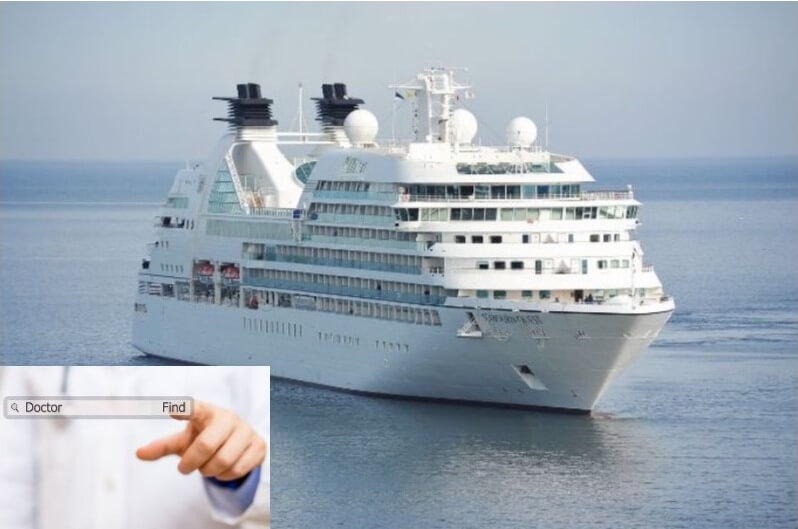Telemedicine on seas
Telemedicine is the use of information, communication technology in providing clinical care to remotely located patients. Being out of the ordinary land environment, seafarers cannot access direct medical services calling for the innovations through telemedicine practices. According to Infinite healthcare, medical emergencies across the seas forces one in five ships to divert from the course at the cost of $180,000 per diversion.
In these diversions, 20% of the cases are never critical and could have been resolved using Telemedical assistance. Around the world, there are about 65,000 deep sea merchant and marine vessels operating carrying approximately 1.6 million seafarers. In one study, by the International Maritime Health Journal, it was found that one in five ships is forced to divert course due to medical reasons at the cost of $168 million to the entire industry.
Telemedicine has been able to bring healthcare services to locations as far as North America, Europe, and the Asia Pacific oceans. Apart from improving access to health care, it is cost efficient thus calling for the funding or adoption of telemedicine technologies. Most important, telemedicine enables seafarers to manage chronic illnesses.
Health officers can get professional assistance in treating emergency cases of chronic illnesses like asthma and diabetes by receiving virtual instructions through satellite phones, internet assisted telemedicine technologies like iPads, smartphones, digital ophthalmoscopes, digital stethoscopes, digital otoscopes and wearable biosensors. With the use of telemedicine technology, several problems and challenges in treatment have been curbed.
Since seafarers cannot access immediate physical help, telemedicine promotes conveniency where a patient does not have to wait to be airlifted to a medical center for treatment.
Also, a seafarer with chronic illnesses like asthma and diabetes will be able to continue with his work in the vessel knowing that he can have his medical checkup through virtual communication in times of emergency. Medical care costs are reduced in situations where there are unnecessary, and non-urgent ER physical checkups.
Telemedicine has enabled quick adequate care thus through remote monitoring of patients when the specific medical provider is out of reach. This is because several emergencies are experienced in the seas like broken limbs, bites and tropical diseases. Through telemedicine, seafarers can easily reach out to medical specialists since they will be able to use telemedicine equipment to transfer vital signs to a physical doctor on the ground. And even though many crews will carry a physical copy of the captain’s medical guide, it is much safer to access a medical specialist, thus widening options for Medicare.
This, however, calls for the multi-facet relationship among physicians with their patients and partners in the health system. Due to the difficulty in reach and lack of physicians willing to work in high seas, telemedicine is the solution.
It has enabled the use of virtual consultations thus increasing patient’s access to healthcare for this group.
Some of the services provided by telemedicine include real-time consultations, therapy, counselling, patient observation, virtual surgery with the assistance of physicians on the group and emergency response.
The annual cost of industry diversions and helicopter evacuations is $760 million, where only a quarter of each is necessary. With telemedicine, this has been reduced. Providers of these services continue to reap the benefits with the global market rise of $64 billion by 2022.
| Recommended for you | |
| Phillips brings telemedicine to Japanese hospitals | |
| Eyecare telemedicine startup raises funding of $16 Million | |
| Top 10 Doctor-Patient platforms in India |
Major players working to bring telemedicine to seafarers
Different companies and healthcare providers are working towards developing robust telemedicine solutions for sea travel.
- The SetelHellas’ Maritime Telemedical Solution (MTS) company provides a platform where seafarers can gain access to immediate medical consultation, unlimited access to clinical specialists and improvement of retention rates of patients through easy access to medicine. In the end, these groups are able to reduce medical costs through unnecessary airlifts and hospital stays.
- Martek Marine’s iVital is also one of the pioneers of telemedicine in high seas. Through its innovation, the company revolutionized healthcare among seafarers that led to an estimated $168 million in savings. It is estimated that the company’s 55,000 merchant vessels attend to 1.5 million seafarers across the globe. The annual cost of the industry evacuations by the helicopter is estimated at $760 million of which only quarter is very necessary.
- Marlink’s Change Telemed is a technology-based Telemedicine company that provides IT, communication and digital solutions for physicians to enable them to run remote operations to high sea areas in a more profitable, safe and reliable manner. Through its innovation known as Xchange Telemed, the company is able to assist high seas medical professionals when it comes to making diagnosis thus they are able to avoid costly rerouting of vessels and unnecessary evacuations.
Then there is the future care, which is dedicated to providing medical care to seafarers, by treating injuries, illness and general healthcare at sea and land.healthcare at sea and land.
Cardioexpress is one of the leading companies that provide maritime communication solutions for seafarers. The company has a technology-assisted platform which offers live video-enabled telecare. The company’s medical specialists consult patients and are equipped with treatment.
Also, shipmedcare provides physical and mental health of seafarers through testing and diagnosis, providing guidelines for diet, sanitation, psychological and medical monitoring in real-time all over the world.
The company has a team of specialists based in Greece who is supported by net specialists and medical centers in Greece. Future care and shipmedcare provide medical management and cost containment service for the maritime industry. In this way, the company meets the medical needs of shipowners and seafarers.
Since telemedicine is important for high seas, naval forces have also tied up with stakeholders to provide healthcare. For example, Polycom has partnered with Italian military for the installation of telemedicine solutions in their naval sites.
Amrita hospital from India has also collaborated with Indian Armed forces to provide virtual medical solutions.
The collaboration includes the training of doctors and nurses that will work with the navy. The collaboration will involve virtual treatment for these patients including the performance of surgery and complex medical procedures.
There is no stopping the telemedicine market
Telemedicine is an efficient, effective and cost-effective way of providing medical care for seafarers. It is has become a great necessity in the high seas when merchant’s vessels are not in the presence of doctors. This has also proven to work well in other departments like the military and hardship areas.
Because the world is still lacking enough medical practitioners, and even those present decline working in high seas, telemedicine provides a lasting solution for the medical care of more than 1.6 million seafarers.
Through telemedicine lives have been saved, costs have been reduced and unnecessary lifting of patients is avoided thus reducing stay in the hospital providing more beds for serious cases.
Apart from providing financial savings for patient and financial gains for providers, telemedicine is able to save lives. An inexperienced medical officer or caregiver only needs to connect with a virtual physical where treatment or further instructions regarding the patient will be done virtually.
Image credit:

















